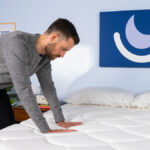Considering nearly half of adults snore regularly, it’s no wonder so many people are on the hunt for something — anything — that promises quieter nights. Consulting with a doctor is a wise first step to stop snoring, but switching up your mattress and sleep position can often help, too. We’ll walk you through how to choose a mattress for snoring, including both the key factors to consider and several of our team’s top picks.
The Best Mattresses for Snoring
-
Best Overall Mattress
–
Solaire
View Details
-
Most Comfortable Mattress
–
WinkBeds GravityLux
View Details
-
Best Mattress for Couples
–
Nectar Premier Copper
View Details
-
Best Mattress for Side Sleepers
–
Helix Midnight
View Details
Swipe for more
Best Overall Mattress
Solaire
15% off orders of $1,000 or more
15% off orders of $1,000 or more
The Solaire from Saatva is an excellent solution for sleepers who need a specific firmness level to help alleviate snoring. The airbed model can be adjusted to 50 different firmnesses, while foam and latex layers give you ample cushioning.
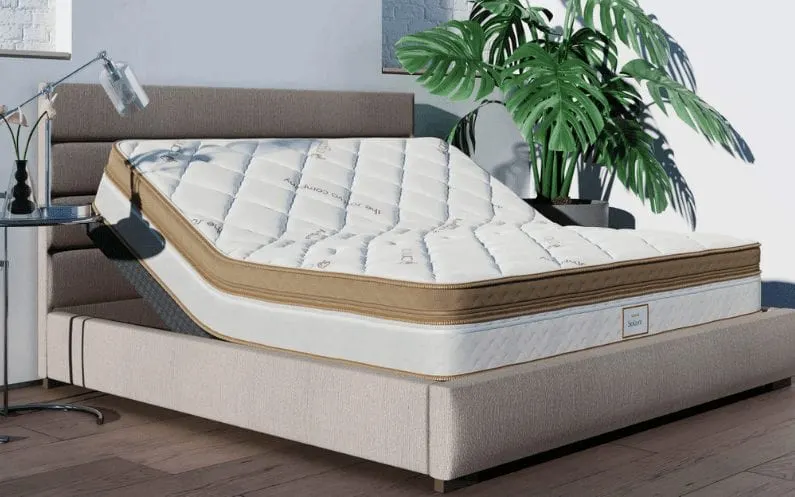
Ideal For
Couples
Firmness
50 Firmness Levels
Value
Fair Value
Couples
Minimal Motion Disturbances
Pros & Cons

-
Pros
-
Fully customizable with 50 firmness levels
-
Pairs perfectly with an adjustable base
-
Exceeded expectations of side sleepers on our team
-
-
Cons
-
Price is high for shoppers on a budget
-
Heavy design can be awkward to move
-
Our Take

Why We Like It
The Solaire brings customization to the next level with 50 firmness levels and dual-side adjustability for larger sizes. Memory foam and latex layers give the surface more cushioning and contouring compared to the average airbed mattress.
The support core features vulcanized rubber air chambers that are about 6 inches thick. A multidirectional baffle box construction disperses air evenly for consistent support. Vulcanization hardens the rubber in order to improve the core’s durability. The chambers are encased in foam, which strengthens edge support while also concealing the air inflator. The foam absorbs motion and sound well, so co-sleepers shouldn’t be disturbed as much by their partner’s movements.
At 13 inches thick, the mattress is a little taller than average. Sizes queen and larger have separately adjusting sides, which is ideal for couples with different preferences. Smaller sizes operate uniformly via a single remote.
How Does It Feel?
Saatva’s Solaire Adjustable Firmness Mattress is designed with versatility in mind. You can adjust the firmness of the bed from soft (3) to firm (8), with 50 different feels in total. The mattress also pairs nicely with an adjustable bed frame, which can elevate the head and may reduce snoring.
The mattress features a soft Euro-top covered in breathable organic cotton. A 2-inch layer of plush polyfoam is quilted inside the cover for extra padding. The quilted surface is zoned to provide targeted support to the lumbar region, helping to boost pressure relief.
Next is a layer of Talalay latex that contours to the body without causing too much sink. Zoning delivers variable support, depending on where your weight is concentrated, while tiny perforations are engineered to promote breathability. A layer of memory foam cradles sleepers to ease tension. Gel infusions are designed to offset heat retention that can occur due to the foam’s close hug. A barrier layer of PVC sheeting and polyfoam below is meant to protect the air chambers from moisture damage.
Sleeper Type Ratings

The ratings below indicate how suitable this mattress is for different sleeping positions and sleeper weights, taking into account factors such as support and pressure relief.
Most Comfortable Mattress
WinkBeds GravityLux
Get $300 off all mattresses at Winkbeds
Get $300 off all mattresses at Winkbeds
The WinkBeds GravityLux is an all-foam mattress with enhanced support in key areas, which helps keep your body from sinking in too deep. With three firmnesses to choose from, most of our testers found a model that felt comfortable.
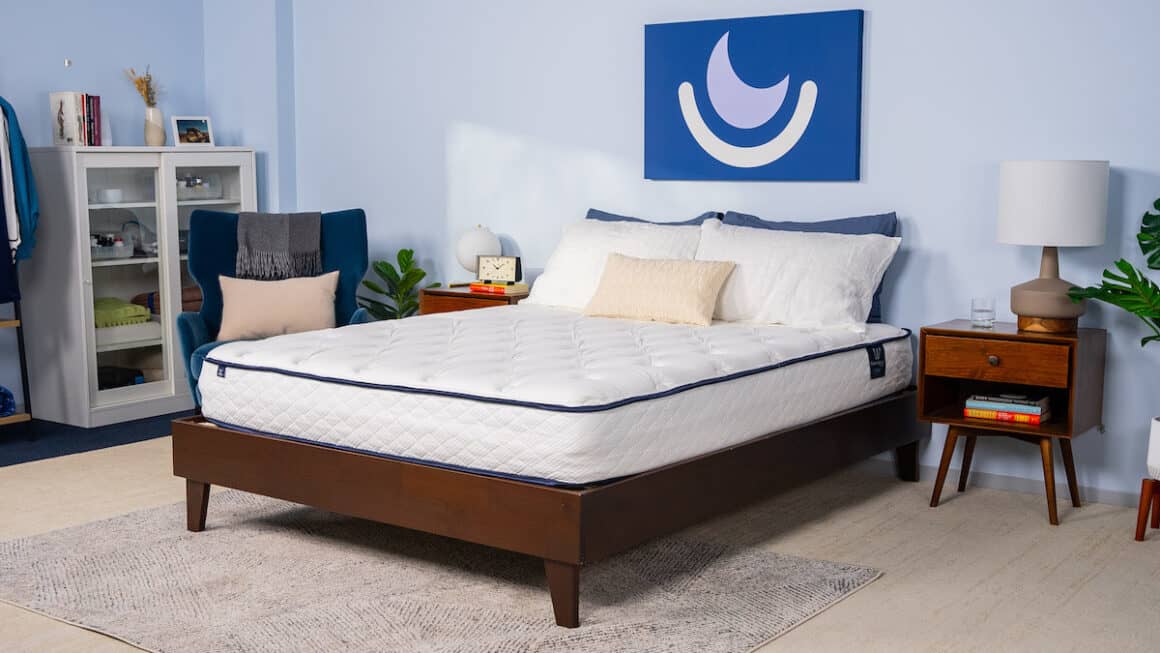
Ideal For
Back Sleepers
Firmness
Medium Soft, Medium Firm Options
Value
Good Value
Couples
Minimal Motion Disturbances
Pros & Cons

-
Pros
-
Breathable, eucalyptus-derived Tencel cover
-
AirCell memory foam engineered to dispel heat
-
Zoned construction offers extra support to the lower back
-
-
Cons
-
Soft model inhibits some movement
-
Stomach sleepers may receive insufficient support
-
Our Take

Why We Like It
The WinkBeds GravityLux builds on the standard memory foam mattress with a zoned layer to prevent excessive sinkage around your heavier areas. Three firmness options ensure that most people can find a comfortable design regardless of their body type or sleep position.
Mattresses that deliver top-notch lumbar support can also help manage snoring by promoting good sleep posture. The WinkBeds GravityLux uses both plush and firm foam layers to balance pressure relief with stability. This combination can be beneficial for snorers and people with back pain. The versatile model comes in three firmness levels: medium soft (4), medium (5), and firm (7).
How Does It Feel?
The mattress has a soft and breathable Tencel cover derived from eucalyptus. A 2-inch layer of gel-infused polyfoam is quilted inside the cover for extra padding. Next is AirCell memory foam, which molds to the unique contours of your body for targeted pressure relief. The foam has tiny air capsules designed to enhance breathability while also limiting motion transfer.
A transitional layer of zoned polyfoam gives sleepers extra support where weight is concentrated. The heavier lumbar region receives greater pushback, while the legs and shoulders receive more give and gentler cradling. A final base layer of high-density polyfoam stabilizes the upper layers. The mattress has a total height of 12 inches.
We found the medium soft (4) model best suited to people under 130 pounds, particularly side sleepers. The side and back sleepers on our team weighing 130 to 230 pounds felt comfortable on the medium (5) model, as did stomach sleepers under 130 pounds. The firm (7) option received favorable ratings from our stomach and back sleepers weighing at least 130 pounds, as well as side sleepers over 230 pounds.
Sleeper Type Ratings

The ratings below indicate how suitable this mattress is for different sleeping positions and sleeper weights, taking into account factors such as support and pressure relief.
Best Mattress for Couples
Nectar Premier Copper
Up to 40% off mattresses
Up to 40% off mattresses
The Nectar Premier Copper is an excellent choice for side sleepers who are tired of waking up with sore spots in the shoulders and hips. The adaptive all-foam design conforms closely to your body to reduce painful pressure buildup at night.
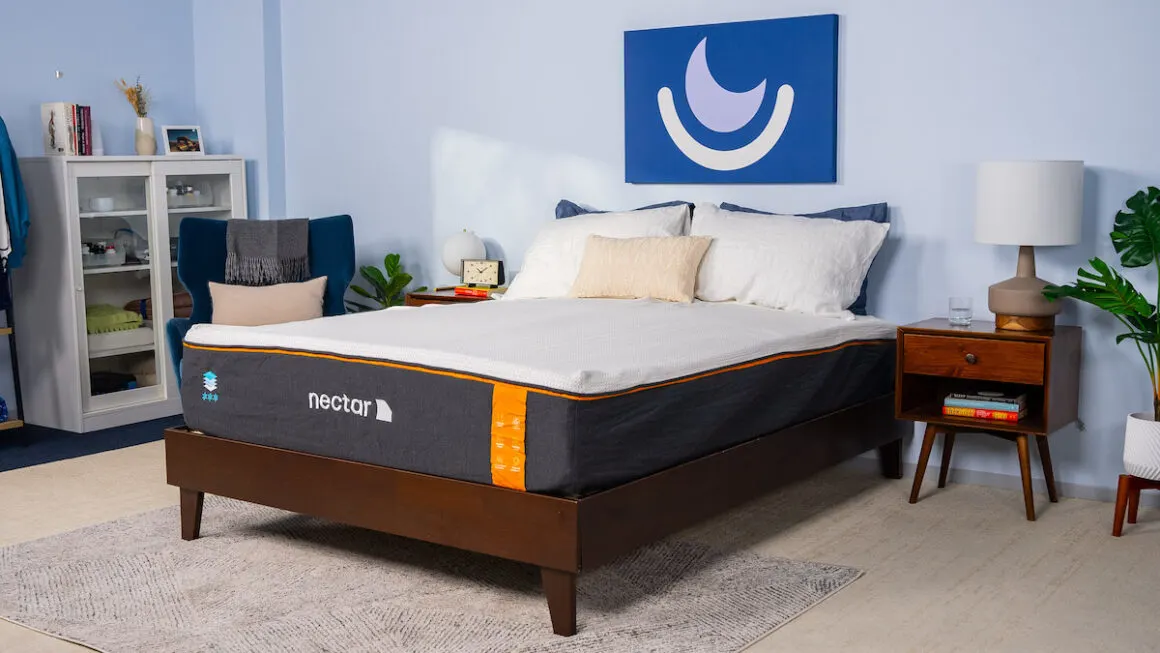
Ideal For
Side Sleepers
Firmness
Medium Firm
Value
Good Value
Couples
Minimal Motion Disturbances
Pros & Cons

-
Pros
-
Cooling cover with thermal-conductive copper fibers
-
Plush memory foam delivers exceptional pressure relief
-
Extra-thick polyfoam core for added stability
-
-
Cons
-
May feel too soft for stomach sleepers over 130 pounds
-
Some hot sleepers may feel too warm
-
Our Take

Why We Like It
We found the Nectar Premier Copper especially well suited to side sleepers due to its close, even contouring and deep cushioning for the shoulders and hips. The mattress also limits heat retention with cooling components near the surface and absorbs most movement to significantly reduce motion transfer.
How Does It Feel?
Nectar’s Premier Copper Mattress features a thick memory foam comfort layer that provides excellent pressure relief. By cushioning pressure points around the hips and shoulders, this all-foam model can help snorers who are trying to make the change to side sleeping. The high-density support core reinforces good sleep posture, which in turn may help regulate snoring by keeping airways open. The mattress has a moderately firm feel that rates as a 6 on our 10-point firmness scale.
The mattress’ quilted cover has copper fibers designed to disperse heat. Below is a thick layer of plush memory foam that cradles pressure points along the spine. The layer is infused with phase change material designed to draw in and release body heat.
A layer of transitional polyfoam redistributes body weight in order to maintain the natural curve of the spine. The base is composed of sturdy, high-density polyfoam. Completing the mattress is a non-slip base cover for extra stability. The mattress measures 14 inches thick, so it may require fitted sheets with deep pockets.
Sleeper Type Ratings

The ratings below indicate how suitable this mattress is for different sleeping positions and sleeper weights, taking into account factors such as support and pressure relief.
Best Mattress for Side Sleepers
Helix Midnight
Up to 30% off + 2 free pillows
Up to 30% off + 2 free pillows
The Helix Midnight is a hybrid mattress that hits a sweet spot between support and cushioning for a wide swath of sleepers. Beds with a comfortably balanced design are a must-have for sleepers prone to snoring.
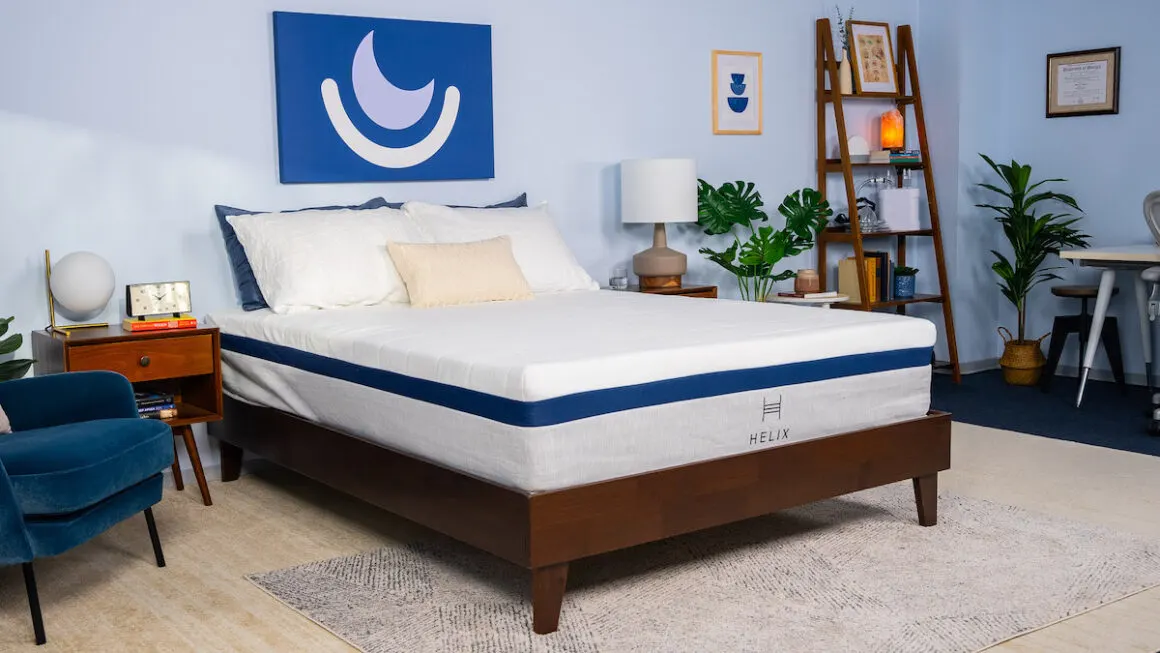
Ideal For
Combination Sleepers
Firmness
Medium Firm
Value
Good Value
Couples
Minimal Noise
Pros & Cons

-
Pros
-
Foam comfort layers offer excellent cushioning
-
Medium firm (6) feel and sturdy coils ensure lower back support for many side and back sleepers
-
You can choose to upgrade to a cooling cover
-
-
Cons
-
Stomach sleepers over 230 pounds won’t receive enough support
-
Foam may emit minor off-gassing odor at first
-
Our Take

Why We Like It
The Helix Midnight combines foam layers on top with a sturdy coil support core on the bottom. The foam conforms closely enough to your body to cradle pressure-prone areas but the coils prevent your body from sinking in too deep. Our side sleepers between 130 and 230 pounds and back sleepers under 130 pounds gave the bed especially high marks, since the bed offered just enough cushioning for the shoulders, hips, and spine, but still kept the lumbar area in a neutral position.
How Does It Feel?
The bed has a medium firm (6) feel with impressive cushioning on the surface, thanks to the adaptive foam layers. The foam not only relieves pressure buildup, it also absorbs noise and makes for a quieter sleep experience for those sensitive to creaky beds at night. Airflow through the coils helps keep heat retention at bay, but you can also upgrade to a cover made of phase change material if you tend to overheat during sleep.
Sleeper Type Ratings

The ratings below indicate how suitable this mattress is for different sleeping positions and sleeper weights, taking into account factors such as support and pressure relief.
For a deep dive into finding the perfect mattress, explore our guide to the best mattresses of 2024. If you’re curious about beds that elevate your head, check out the best adjustable beds to find models that offer customizable sleep positions to alleviate snoring.
Best Overall Mattress
Solaire
15% off orders of $1,000 or more
SHOP NOWAn airbed with adjustable firmness levels, the Solaire is perfect for dialing in a mattress feel that’s perfect for you and your needs.
SEE MORE DETAILS
Most Comfortable Mattress
WinkBeds GravityLux
Get $300 off all mattresses at Winkbeds
SHOP NOWAn all-foam mattress with enhanced support in key areas.
SEE MORE DETAILS
Best Mattress for Couples
Nectar Premier Copper
Up to 40% off mattresses
SHOP NOWA high end memory foam bed that conforms close to your body to relieve pressure, without overheating.
SEE MORE DETAILS
Best Mattress for Side Sleepers
Helix Midnight
Up to 30% off + 2 free pillows
SHOP NOWA versatile hybrid mattress with a universal appeal.
SEE MORE DETAILS
Best Type of Mattress for Snoring
Choosing the right mattress type can help reduce snoring, particularly if your symptoms are caused by allergies, nasal congestion, or are worse when sleeping on your back. A mattress for snoring should support a sleep posture that eases breathing. It should also contain materials that reduce congestion-triggering allergens.
Foam
Foam mattresses cradle the body and relieve pressure, making them ideal for side sleepers and those new to this breathing-friendly position. Deep contouring helps maintain a stable sleeping posture, great for combating snoring. But, foam also has a tendency to retain heat.
Hybrid and Innerspring
These options merge foam or latex comfort layers with a support layer made of coils. Coils add airflow and a bit of bounce to both mattress types, which might appeal to those who move around at night. At the same time, motion transfer and occasional noise from the coils could disturb light sleepers.
Latex
Renowned for their durability, latex mattresses offer a responsive surface that can help maintain spinal alignment. Latex mattresses are also breathable and have naturally hypoallergenic properties, which may help reduce congestion that worsens snoring among people with allergies.
Airbed
Airbeds allow for adjustable firmness, enabling sleepers to find the optimal feel to support side sleeping and minimize snoring. The ability to adjust firmness on each side of the bed can be particularly beneficial for couples with different preferences. However, airbeds can be expensive and difficult to move.
Adjustable Beds
Tailor-made for reducing snoring, adjustable beds let you find the perfect sleeping angle to open your airways. Usually remote-operated, adjustable beds allow you to incline the head and sometimes decline the foot of the bed. These beds offer a combination of comfort and flexibility, with the potential to lessen snoring when paired with a compatible mattress.
How Sleeping Position Affects Snoring
Your choice of sleeping position can heavily influence your snoring. Back sleeping can lead to snoring, as tissues in the mouth and throat fall back and narrow the airways. Side sleeping, on the other hand, is an evidence-based method of reducing snoring. Elevating your head, either with pillows or an adjustable bed, can also reduce snoring by opening the airways.
How to Determine the Right Firmness Level for You
We use a 10-point firmness scale to help match your unique needs to the right mattress. To reduce snoring, the right firmness is one that supports a healthy sleep position and is well suited to your body weight and preferences.
In general, side sleepers and lighter individuals prefer softer mattresses, while back or stomach sleepers and heavier individuals benefit from firmer options.
| Under 130 lbs. | Between 130 and 230 lbs. | Over 230 lbs. | |
| Side Sleepers | Soft (3) to Medium (5) | Medium Soft (4) to Medium (5) | Medium Firm (6) to Firm (7) |
| Back Sleepers | Soft (3) to Medium (5) | Medium (5) to Firm (7) | Firm (7-8) to Extra Firm (9) |
| Stomach Sleepers | Medium Soft (4) to Medium Firm (6) | Medium (5) to Firm (7) | Firm (7-8) to Extra Firm (9) |
Additional Tips to Prevent Snoring
Beyond choosing the right mattress, several strategies can further help prevent snoring, enhancing sleep quality for you and your partner.
Change Up Your Sleeping Position
Switching from back to side sleeping can make a noticeable difference in snoring levels. If you’re new to side sleeping, body pillows may help you maintain this position throughout the night, offering a simple approach to reducing snoring.
Find the Right Pillow
A pillow for snoring elevates your head to the ideal angle to help keep your airways open. For side sleepers, a higher loft might be beneficial, while back sleepers might opt for a medium loft. Wedge pillows and other specialized shapes can also prop up the head and encourage a snore-reducing sleeping position.
Try an Anti-Snoring Device
Nasal strips and mouthpieces can sometimes provide quick snoring relief. Nasal strips work by gently opening the nasal passages to improve airflow, while mouthpieces adjust the position of your jaw or tongue to keep the airway open. These devices target the root causes of snoring without the need for medications or surgeries.
Video: How to Stop Snoring
Watch our video as our sleep expert explains what’s happening in your body to make you snore each night, some simple home remedies to help, and when you should likely seek medical advice.
Discover More Mattress Solutions
Check out our other mattress buying guides to find the right mattress for your needs.
More Mattress Options for Specific Needs
How We Test
Our recommendations come from extensive research and hands-on testing, ensuring you get advice you can trust. Given that many of us are ex-snorers, we’ve paid extra attention to how different mattresses can impact snoring. Our diverse team of testers, with their wide range of sleeping styles and body types, spends considerable time with each product. For an in-depth look at our process, visit our methodology page, where we detail our approach to finding the best mattresses.
Frequently Asked Questions
Snoring occurs when airflow is restricted in the throat and nasal passages, causing tissues to vibrate. Snoring can be influenced by various factors, including sleep position, anatomy, and nasal congestion. Addressing these factors can help reduce snoring.
The ideal mattress for snorers is one that supports proper spinal alignment, promotes side sleeping, and doesn’t worsen nasal congestion caused by allergies. Hybrid, latex, and adjustable beds are often recommended for their balance of comfort and support for side sleepers.
The right mattress firmness depends on your body weight and sleep position. That said, we’ve found that a medium firm mattress works well for most snorers. It provides the right mix of softness and support for side sleeping, which can help keep airways open and reduce snoring.
Side sleeping is considered the best position for reducing snoring, as it helps maintain open airways. In contrast, back sleeping is considered the worst position because tissues in the mouth and throat can fall backward and narrow the airway.
Elevating your head can help reduce snoring by improving airflow and keeping your airway from becoming blocked during sleep. Adjustable beds and wedge pillows are effective tools for maintaining this sleeping position.
Ask the Sleep Doctor
Have questions about sleep? Submit them here! We use your questions to help us decide topics for articles, videos, and newsletters. We try to answer as many questions as possible. You can also send us an email. Please note, we cannot provide specific medical advice, and always recommend you contact your doctor for any medical matters.
